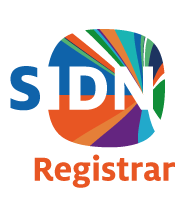Sitemaken.com helpdesk
Questions? Issues? Need help?
Fill in the form below, call us or send us an email. If you send an email, you will receive an answer within an hour during office hours!
tel: +31 (0)85-877 09 54
Would you like more information or do you have a question for the helpdesk?
Fill in the form below and click on send.
How do I set up my email account?
POP3 account
User name: your e-mail address
Server incoming e-mail: mail.yourdomainname.com
Password: your e-mail password
Port: 995
SSL or TLS: on
Server outgoing e-mail: mail.yourdomainname.com (or the smtp server of your internet provider)
SMTP Port: 465 or 587
SSL or TLS: on
If you use mail.yourdomainname.com as the outgoing server, verification is required with the same login details as above.
IMAP account
User name: your e-mail address
Server incoming e-mail: mail.yourdomainname.com
Password: your e-mail password
Port: 993
SSL or TLS: on
Server outgoing e-mail: mail.yourdomainname.com (or the smtp server of your internet provider)
SMTP Port: 465 or 587
SSL or TLS: on
If you use mail.yourdomainname.com as the outgoing server, verification is required with the same login details as above.
What is the difference between POP3 and IMAP?
When setting up your email program, such as Outlook and Apple or Windows Mail, you can usually choose between a POP3 and an IMAP account. Both protocols have advantages and disadvantages, we explain more about this below.
POP3
When you retrieve your e-mail via POP3, you are in fact physically retrieving the e-mail from the server and placing it locally on the device with which you read the e-mail.
Benefits
- The mailbox is fully retrieved every time as you connect to the e-mail server, so the e-mail box will fill up less quickly.
- You don't always have to be connected to the internet to read your e-mail.
Cons
- If the device you use to retrieve the email breaks down, the email is lost (unless you have made a backup).
- If you retrieve the e-mail via another device (mobile phone, tablet or computer) or webmail, it could happen that the POP account deleted the mail from the server, so it won't be accessible on an other device .
IMAP
When you retrieve e-mail via IMAP, you actually read the e-mail directly from the server.
Benefits
- If the device with which you retrieve the e-mail breaks, the mail will remain on the server.
- Handy if you retrieve the e-mail via another device (mobile phone, tablet or computer) or webmail, the same e-mail is on all devices.
Cons
- You must always be connected to the internet to read your e-mail.
- The mail is not physically retrieved and removed from the server. The disk space usage will therefore increase if you do not regularly clean the e-mail box (delete e-mail).




